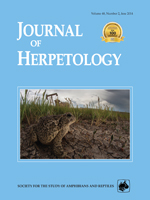Most reptiles are oviparous (egg-laying), but viviparity (live-bearing) has evolved about 100 times in lizards and snakes. Geographic biases in the distribution of viviparous species stimulated the “cold-climate hypothesis,” proposed independently by three field-based researchers in the early 1900s. Mell (in China) and Weekes (in Australia) viewed viviparity as a mechanism for thermal buffering of embryos from nighttime frosts, whereas Sergeev (in Russia) suggested that eggs retained in utero would develop faster because they were kept warmer, enabling early hatching. Although alternative adaptationist hypotheses proliferated over the next few decades, many had logical flaws (failing to consider intermediate stages). Phylogenetically based analyses identified around 100 independent origins of viviparity from oviparity, and revealed a strong trend for viviparity to evolve in cold climates. After experimental studies showed that incubation temperatures affect offspring phenotypes as well as rates of development and survival, I proposed (in 1995) that by retaining eggs in utero, a mother can manipulate the phenotypic traits of her offspring (and thus, enhance their fitness). This mother of all hypotheses subsumes the cold-climate hypothesis, and has been supported by studies on both oviparous and viviparous squamates, and in tropical as well as cold-climate areas. The history of this research topic illustrates the emergence of similar ideas from different researchers (sometimes creating tensions); the major roles of happenstance and field experience in suggesting ideas and allowing them to be tested; and the vital contributions of concepts, methodologies, and technologies from other fields to our understanding of reptilian viviparity.
How to translate text using browser tools
1 June 2014
Evolution of an Evolutionary Hypothesis: A History of Changing Ideas about the Adaptive Significance of Viviparity in Reptiles
Richard Shine
ACCESS THE FULL ARTICLE

Journal of Herpetology
Vol. 48 • No. 2
June 2014
Vol. 48 • No. 2
June 2014




